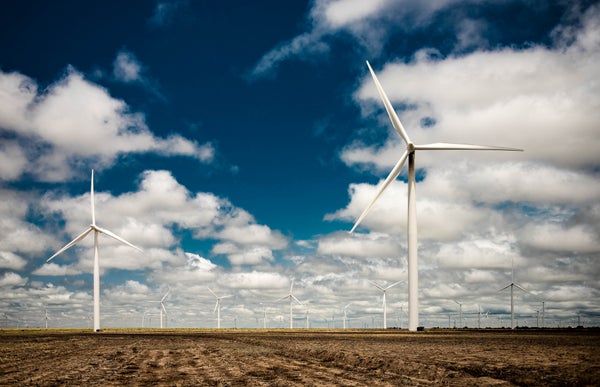This article was published in Scientific American’s former blog network and reflects the views of the author, not necessarily those of Scientific American
While Texas is most often associated with fossil fuels and conservative politics, it’s also earning a reputation as a leader in renewable energy integration.
For years, Texas has led the United States in installed wind capacity, thanks to a $7 billion investment in transmission lines linking windy West Texas to load centers the state approved back in 2007. Since then, the state has seen sustained growth in wind energy with few integration issues to speak of. The Texas grid, operated by the Electric Reliability Council of Texas (ERCOT), has seen sustained levels of wind energy penetration above 40 percent for hours at a time without significant issues.
But of course, the wind isn’t always blowing hard enough to cover 40 percent of Texas’ electricity needs. What really matters is the amount of energy renewables provide over the entire year. That’s what’s so remarkable about the numbers that have been coming out of Texas in recent years.
On supporting science journalism
If you're enjoying this article, consider supporting our award-winning journalism by subscribing. By purchasing a subscription you are helping to ensure the future of impactful stories about the discoveries and ideas shaping our world today.
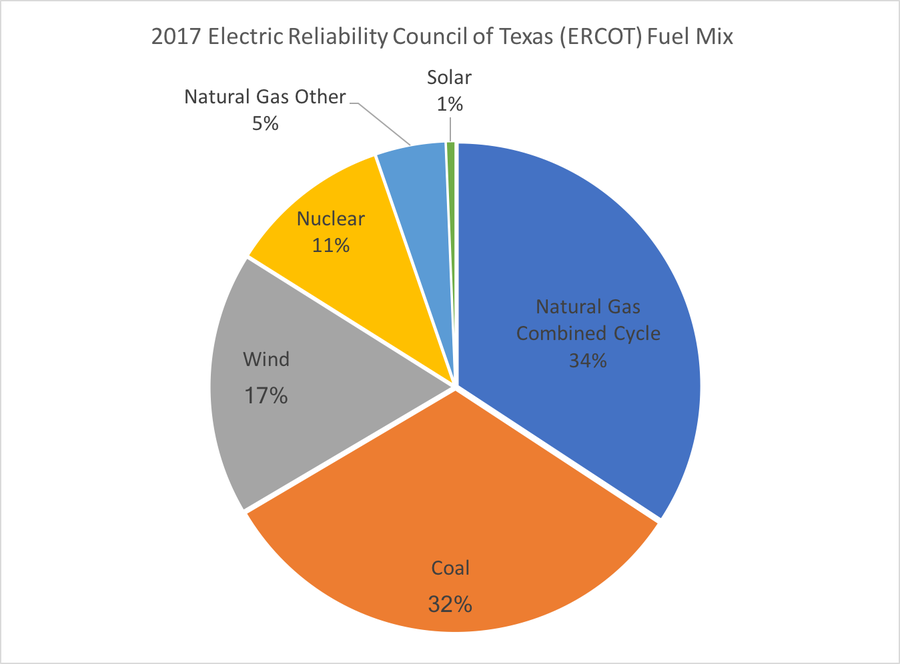
Texas generated 18 percent of its electricity using wind and solar energy in 2017. Furthermore, natural gas combined cycle — the cleanest, most efficient fossil generation technology available — produced more energy than coal, indicating it is starting to take over coal’s traditional baseload role. Source: ERCOT
Last year, Texas generated 18 percent of its energy from wind and solar — with wind providing the vast majority of total renewable generation. The 18 percent number matters because for years critics of renewable energy have argued that grid costs and reliability will spiral out of control before we hit 20 percent wind and solar. But in Texas, retail electricity prices have actually decreased, coming in well below the U.S. average.
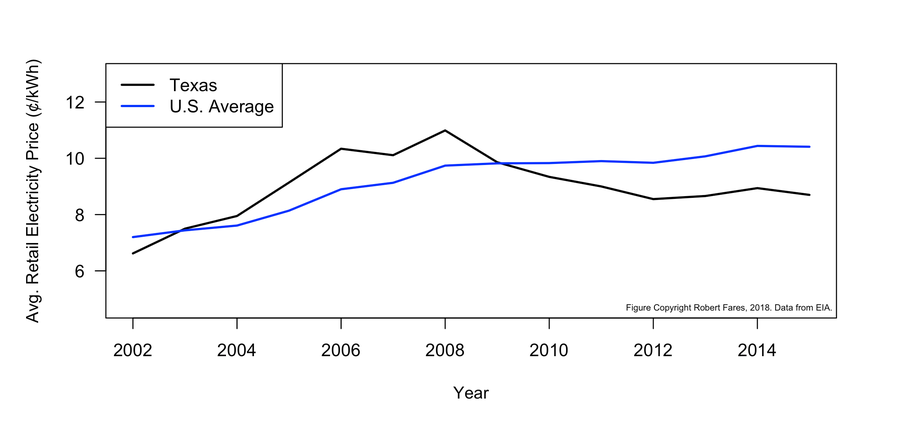
Average Texas electricity prices have come in consistently below the national average since 2009. Furthermore, Texas electricity prices are roughly flat or declining, while the national average is rising slightly. Source: EIA
Part of the reason Texas’ renewable integration achievements are such a big deal is that the Texas grid is essentially completely isolated from the other U.S. grids. The United States has three synchronous power grids: the Eastern Interconnection, the Western Interconnection, and the Texas Interconnection. The only electrical connection between the Texas grid and the other U.S. grids is direct current lines that carry relatively little power. There’s no tricks here — every bit of renewable energy produced in Texas has to be transmitted and balanced within the state. (Other big wind energy producers, like Denmark, have the advantage of being able to exchange power with neighboring grids, making integration easier).
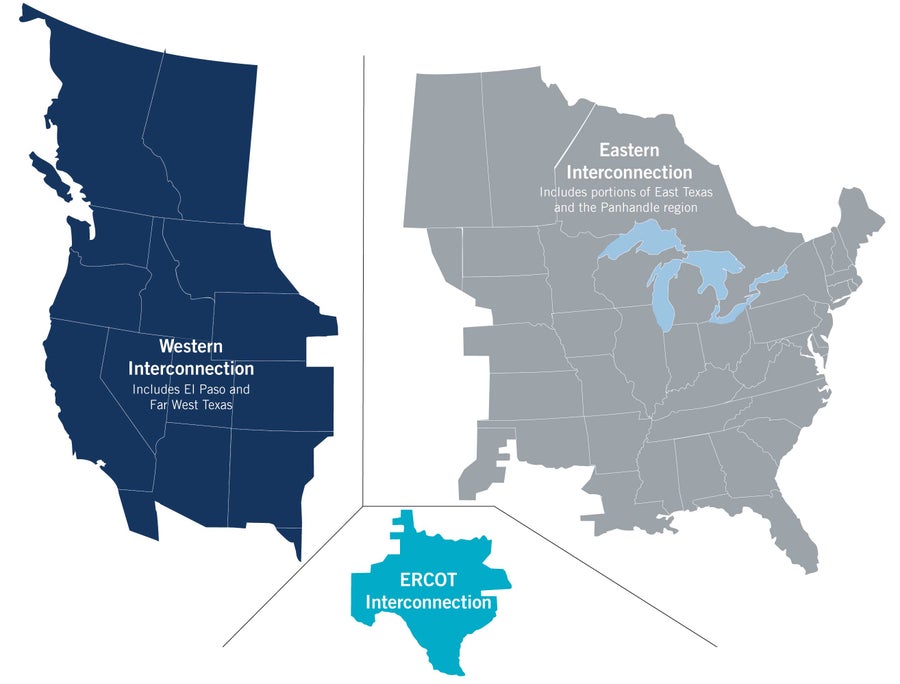
The United States has three electric grids: the Eastern Interconnection, the Western Interconnection, and the Texas Interconnection. The fact that Texas can’t exchange large amounts of power with other states makes its renewable energy integration achievements even more noteworthy. Source: ERCOT
You might be thinking that Texas’ hosting capacity for wind and solar might be nearly saturated. Sure, the state has integrated a lot of wind so far without any major problems, but are people building new wind and solar plants? The answer is a definitive yes.
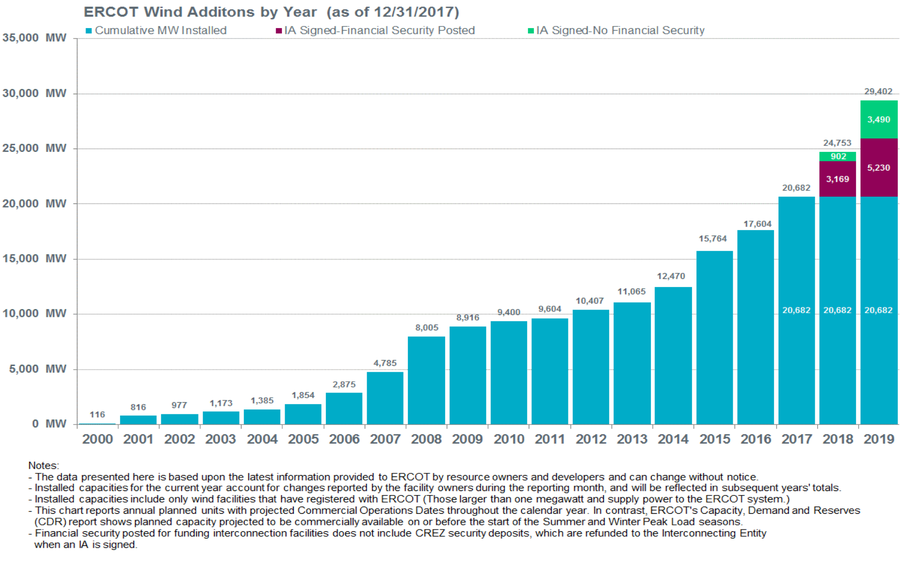
As of December 31, 2017, the Electric Reliability Council of Texas (ERCOT) had approximately 8700 megawatts of new wind energy capacity with interconnection agreements (IAs) signed for 2018 and 2019, amounting to a 40 percent increase in installed capacity. Source: ERCOT Generator Interconnection Status Report
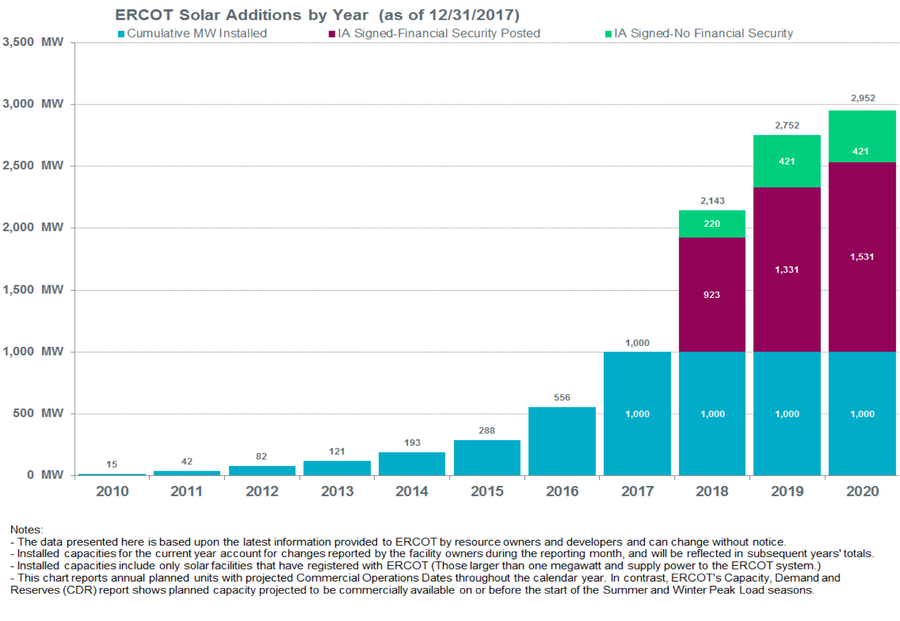
While Texas has installed a relatively modest amount of solar energy to date, there are nearly 2000 new megawatts of solar energy with signed interconnection agreements (IAs) to begin operation between 2018 and 2020 — enough to nearly triple the state’s grid-scale solar capacity. Source: ERCOT Generator Interconnection Status Report
As of December 31, 2017, Texas had 8,720 megawatts of new wind capacity and 1,952 megawatts of new solar capacity in the interconnection queue, the list of new generation projects seeking approval to interconnect to the transmission grid. Wind energy is still getting built at a much faster rate than solar, because it still has a lower levelized cost of energy (as little as 3 cents per kilowatt-hour) than utility-scale solar (about 4-5 cents per kilowatt-hour). However, solar is on the rise with nearly twice the current amount of installed solar capacity planned to be operational by 2020.
Texas is poised to achieve the storied 20 percent renewable energy barrier without the out-of-control costs and stability critics still fret about. That doesn't mean that going beyond 20 percent will be easy — but the Texas experience gives reason be skeptical of experts that claim to know the true barriers to renewable integration.
Over the coming years, battery storage costs will decline, electric demand will become more flexible, renewables will become more "dispatchable," and grid operators will get better and better at integrating renewable energy. Given these convergent trends, I wouldn't be surprised to be surprised at just how much renewable energy Texas and others will be able to integrate effectively over the coming decades.
